Menu
INTEGRATION PARTNER
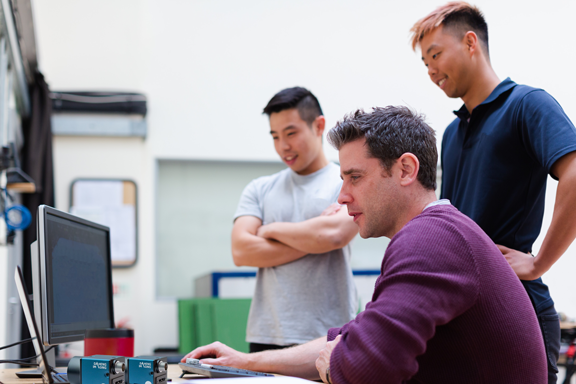
Our customers benefit from our comprehensive expertise of industrial cameras and image processing systems, as well as our broad support. Some customers wish to outsource a part or the entire development process rather than just getting advice or help. In that instance, they'll need an integration partner for their machine vision project. GeT Cameras Inc. has decided not to provide this integration solution because we do not want to compete in our clients' market.
We do, however, know which integration partners are best suited to your machine vision project. If you want an integration partner, please contact us or complete the Application Support Form with the details of your machine vision application. We'll search our database for a vision integrator with experience in your project's field and with our industrial cameras. That is how we ensure you receive the greatest solution for the best price.
If you are a vision integrator, please get in touch with us and share project examples so that we can better understand your capabilities. We will contact you if we have a project for you in your field of expertise.
MACHINE VISION APPLICATIONS
Many diverse machine vision, computer vision, and robot vision applications employ our cameras. This page contains real-world examples of machine vision applications using our industrial cameras. Are there any questions you have concerning these applications? Please contact us via phone or email. We make every effort to respond to all inquiries within one business day.
MACHINE VISION APPLICATIONS - PHARMACEUTICAL INDUSTRY
Because of its direct ties to people's lives and health, the pharmaceutical industry is a quality-critical industry. The assembly line frequently employs a vision inspection system. Capsules, injections, bubble caps, package labels, and other commonly examined items are just a few examples. All Daheng Imaging cameras go through a series of rigorous tests to verify that they can withstand harsh environments and exceed industrial and professional requirements. Pharmaceutical manufacturing is rarely done in a pleasant environment, yet consistent inspection results in a harsh environment are a guarantee of drug quality. Daheng Imaging cameras provide exceptional image quality with high-performance digital interfaces, as well as a rapid trigger response that enables exact capture. Additionally, the trigger signal filter function ensures that only the correct pulses are entered into the camera.
The most significant keys for the vision system in the pharmaceutical business are no incorrect images and no missing images. Daheng Imaging cameras are very adept at this.
The MERCURY family's MER-131-210U3M and MER-502-79U3M feature a number of characteristics, including high speed, exact capture, plug and play, and steady multi-camera operation, among others. As a result of all of this, they've become the inspection system's favorite cameras among engineers. Because of the following attributes, Daheng Imaging Cameras are highly suited for quality inspection in the pharmaceutical industry:
- USB3.0 model with high framerate
- Excellent image quality
- Small dimensions and light weight
- Capture the moment with extreme precision - Perform admirably under harsh conditions
- Multi-camera operation that is stable
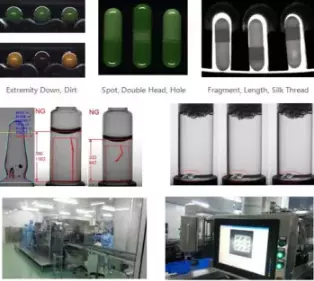
TRAFFIC & TRANSPORTATION
The fault and dimension dynamic detection system for vehicle wheel sets is a safety inspection device put on the railway that may be used to detect the wheel set's geometric characteristics and monitor tread and flange wear. The system can forecast the safety state of the vehicle wheel set using computer analysis, making it easier to deal with vehicle failure in a timely manner. The technology can be utilized in online surveys, locomotive warehousing surveys, high-speed rail warehousing surveys, subway warehousing surveys, and other applications. All DAHENG IMAGING cameras go through rigorous testing to ensure that they can withstand the most demanding industrial and professional environments. Because the vehicle wheel set's working environment is typically challenging, the camera's dependability and stability are critical.
Typically, red spectrum lasers or near-infrared lasers are employed in this application. Because visible spectrum lasers are easily disturbed by sunlight, near-infrared cameras with near-infrared lasers are required in the outdoor environment.
The MER-131-75GM-P NIR and MER-232-48GM-P NIR are near-infrared GigE cameras with On-Semi PYTHON CMOS sensors that have been optimized for use in the near-infrared band.
The MER-131-75GM-P NIR and the MER-232-48GM-P NIR both contain opto-isolated I/Os and are powered through Ethernet. They are built to pass stringent EMC tests and to meet the electromagnetic compatibility requirements of rail traffic.
Because of the following features, Daheng Imaging Cameras are well suited for transportation:
- Enhanced Near Infrared sensitivity
- Cable length up to 100 meters (without any hubs, repeaters etc.)
- Pass essential EMC test
- Exceptional image quality
- Reliable performance in tough situations
- Extremely low noise and compact construction
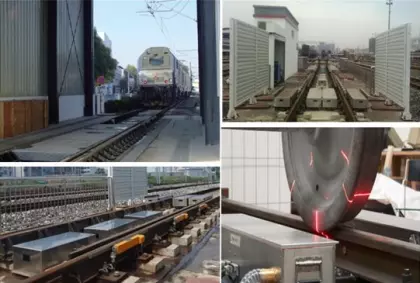
3D APPLICATION & ROBOT VISION
A 3D scanner is a device that collects data on the geometry of a real-world object or environment. The information gathered will be utilized to create three-dimensional computer models. Artistic design, industrial design, reverse engineering, quality control inspection, prostheses, and the digitalization of cultural objects are just a few of the uses for which 3D data is collected. It's also utilized for internet commerce, movie production, and video game development.
Many other technologies can be employed to create these 3D-scanning devices, but stereo vision and laser triangulation with a sheet of light are the most prevalent. Two or more cameras with structure light or encode grating are used in a stereo vision system to derive 3D information on the surface of arbitrarily shaped objects.
The main idea behind the laser triangulation with sheet of light approach is to project a thin luminous straight line onto the surface of the object to be reconstructed using a laser line projector. The calibration relationship between the image plane and the laser plane may be used to compute the Y,Z world coordinate by deriving the laser line coordinate in these images. Furthermore, if the object moves along the X coordinate axis, the camera might collect a series of projected line images, yielding the object's X,Y,Z coordinates.
Because of their features, Daheng Imaging Cameras are well suited to 3D scanners:
- Various resolition and frame rate
- Excellent image quality
- Light weight and tiny size
- High time stamp accuracy
- Excellent adaptability for portable or desktop 3D scanner requirements

GLASS BOTTLE PRODUCTION
We see a variety of glass bottles in our daily lives, such as beer bottles, drink bottles, perfume bottles, and so on. These glass bottles are often mould bottles, which are made by pouring liquid into a mould to form a specific shape. Another type of glass tube used in medicine or pharmacy is one that is made without a mould and requires a higher level of quality.
Vision systems are often deployed in the hot end or cold end of the glass bottle manufacturing process. The inspection machine uses high-speed cameras to gather real-time photos of a glass bottle, then extracts detailed geometric data and verifies the detects.
The inspection machine can identify waste bottles and expel them from the production line by comparing the measuring results to the pre-set dimensions requirements. This provides a strong assurance for bottle quality and production efficiency.
The MERCURY family's MER-131-210U3M, MER-132-43U3M, MER-503-36U3M, and MER-131-75GM-P have unique features such as high frame rate, exact capture, plug and play, and robust multi-camera operation. All of this has led to them becoming one of the most popular cameras among engineers in the glass bottle inspection system.
Because of the following features, Daheng Imaging Cameras are well suited for quality inspection in the glass bottle industry:
- Excellent image quality
- High frame rate
- Ultra-compact, light and durable
- Capture the moment with extreme precision
- Work flawlessly in adverse conditions
- Multi-camera running in a stable state
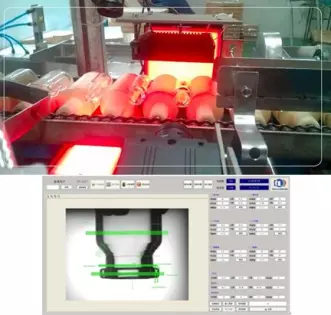
LOGISTICS INDUSTRY
The items are normally sorted, read barcodes, and documented manually in the traditional logistics business before being transported to the pickup location. The sorting process necessitates a huge quantity of people due to the variety of commodities, shapes, and materials. It not only takes a long time and has a high sorting error rate, but it also costs a lot of money in terms of labour. The delivery speed would be significantly slowed.
To address this issue, DAHENG IMAGING created a vision sorting system that can quickly identify items while also determining their location. This system consists of a tiny digital camera from DAHENG IMAGING that uses a USB3.0 interface to transport data to a PC controller for analysis and processing.
Finally, the processed data is transferred to the robot via the Gigabit Ethernet interface, which is utilized to guide the robot through the 'pick up' procedure. As indicated in the diagram below, the sorting system can be utilized not only for automatic sorting in the logistics business, but also for a variety of industrial applications such as positioning, inspection, and measurement.
DAHENG IMAGING MERCURY cameras and a delta robot were used to create this logistics vision sorting system. The 3D image capture module, 3D image processing module, image coordinate transform to robot coordinate module, hand-eye calibration module, and robot control module make up the majority of the system.
The "3D image acquisition module" first catches the high-speed moving baskets on the conveyor line and extracts three-dimensional information about the products inside the baskets. Two MERCURY cameras and a laser light source make up this image acquisition package. The FOV (field of vision) and MR (measure range) both encompass the entire basket. The stereo vision approach is used to rebuild the object's 3d geometry information and determine its position.
"3D image processing module" divides the 3D features of the object into several separated pieces, analyses the most suitable grasping position of the goods, and then passes the position data to the "Image coordinate to robot coordinate" module after getting the 3D geometry information of the objects.
The "Image coordinate to robot coordinate" module transforms the best appropriate grabbing position of the products that have been previously to the robot coordinate utilizing the results of hand-eye calibration. The robot coordinate data will be communicated to the robot and performed by the robot control module via the communication protocol. The robot will accurately grasp the appropriate goods based on the grasping robot coordinate.
This 3D vision sorting system has several advantages over typical robot grasping systems: a) Increased sorting speed b) Make the transition from 2D plane grabbing to 3D plane grasping. c)Achieve a new hand-eye calibration approach despite the fact that the cameras and the robot are in different fields.
In this 3D system, MER-132-43U3M was employed. The camera can be quickly deployed under a variety of tough conditions and integrated into a variety of automatic devices to conduct machine vision tasks because to its small size, light weight, and high performance.
Because of their features, DAHENG IMAGING cameras are well adapted to transportation:
- Ultra-compact, light and durable
- Extremely quiet operation and a small footprint
- Various CCD and CMOS sensors are supported by a wide range of models
- Excellent image quality
- Reliable performance in challenging conditions
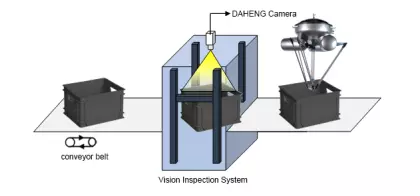
EMBEDDED VISION
Embedded vision has grown in popularity in recent years, and it is well suited for several applications where low cost, power consumption, size, and weight are paramount, such as pilotless cars, unmanned aerial vehicles, robots, and medical devices.
Personal computer platforms based on Intel architectures have maintained a significant processing power edge over the last decade, assuring their domination of most industrial computing applications. However, in recent years, ARM processor designs have been significantly updated, with more cores, instructions, and quicker pipelines added to improve performance, and they have begun to compete head-to-head with Intel and AMD PC processors in industrial applications. The term "embedded system" still connotes low cost and low power consumption, but it no longer implies poor computing power.
Today, we can see the rapid rise of artificial intelligence thanks to huge advances in computer capacity, data accumulation, mathematical tools, and so on (AI). The Convolutional Neural Network (CNN) is a mathematical method that is divided into two parts: training and inference. It is a part of the AI discipline.
The pilotless car is a common application of AI embedded systems. AI technologies are employed in this application to detect obstructions, recognize signs , traffic signals, cars, and people, and so on. A bank of cameras is mounted on and around the vehicle and is in charge of providing real-time photos. Before the car is driven on the road, data training is usually completed at the data center.
The inference algorithm that allows the detections to be made is also built into the ARM architecture. Because of its ARM+GPU processor, the NVIDIA Jetson TX1 or TX2 platform is especially popular in this application. GPUs are very good at manipulating computer graphics and image processing , and GPUs' highly parallel structure makes them more efficient than general-purpose CPUs for algorithms that process large blocks of data in parallel.
DAHENG IMAGING MER-231-41U3C is employed on NVIDIA Jetson TX2 for real-time driving detection in a successful tale. The USB3.0 camera's features of auto gain and auto exposure duration make it suitable for all types of weather and outdoor scenarios. The USB3.0 camera's ARM Linux SDK is built on 'libusb,' which provides a general USB device access, allowing data from USB3.0 cameras to be freely transferred to any ARMV7 or AMRV8 platform.
DAHENG IMAGING thoroughly evaluated the following arm platforms:
- NVIDIA Jetson TX1/TX2
- NVIDIA Tegra TK1
- Toradex Apalis TK1on Ixora Carrier Board
- Raspberry Pi 3B, incl. support of the camera module
Because of their characteristics, DAHENG IMAGING USB3.0 Cameras are well suited to the pilotless automobile:
- Auto gain and auto exposure time
- Excellent image quality
- Ultra-small, light and robust
- Work perfectly in outdoor environment
- ARM Linux SDK for ARM Platform based on ARMV7/8 architecture

Sunday,Monday,Tuesday,Wednesday,Thursday,Friday,Saturday
January,February,March,April,May,June,July,August,September,October,November,December
Not enough items available. Only [max] left.
Add to WishlistBrowse WishlistRemove Wishlist


